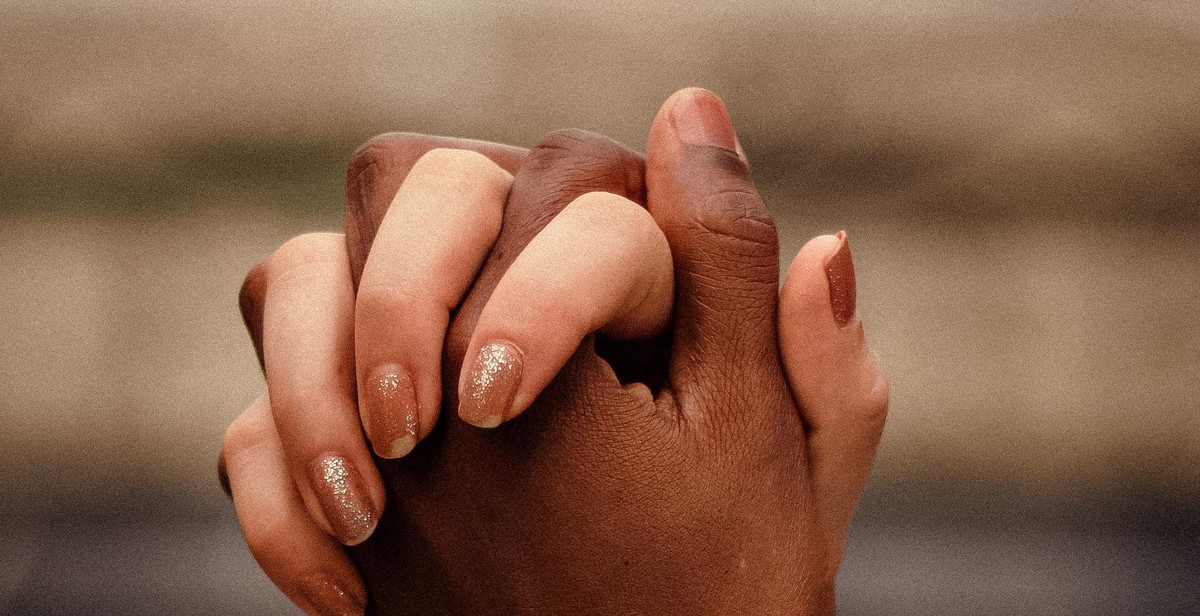Love and Lust: Balancing Emotion and Passion in Your Relationship
Love and lust are two powerful emotions that can make or break a relationship. While love is often associated with emotional connection, trust, and commitment, lust is more about physical attraction and sexual desire. Both emotions are important in a relationship, but finding the right balance between them can be a challenge.
The Importance of Love
Love is the foundation of any healthy relationship. It’s what brings two people together and helps them stay together through thick and thin. Love is about more than just physical attraction or sexual desire. It’s about emotional connection, trust, and commitment. When you love someone, you care about their well-being, you support their dreams and goals, and you work together to build a life that you both enjoy.
The Power of Lust
Lust is a natural human emotion that can bring excitement and passion to a relationship. It’s what makes you feel that spark when you’re with someone you’re attracted to. Lust can be an important part of a healthy relationship, but it can also be a source of conflict if it’s not balanced with love and emotional connection.
In this article, we’ll explore the importance of balancing love and lust in your relationship. We’ll look at how to identify when one emotion is overpowering the other and offer tips for finding the right balance between emotional connection and physical attraction. Whether you’re in a new relationship or have been with your partner for years, these tips can help you build a strong and healthy relationship that’s built on both love and lust.

What is Love?
Love is a complex emotion that can be difficult to define. As a love and relationships psychology guru, I have spent years studying the intricacies of this powerful feeling. At its core, love is a deep affection and connection between two people that involves emotional, physical, and spiritual elements.
Defining Love
Love can take many forms, from the passionate love of a new romance to the deep, abiding love of a long-term commitment. It can be felt between family members, friends, and romantic partners. Some of the key characteristics of love include:
- Feelings of warmth, affection, and caring towards another person
- A desire to be close to and spend time with the other person
- A willingness to sacrifice for the other person’s well-being
- A sense of security and safety in the relationship
- A deep emotional bond that can withstand challenges and difficulties
Love vs. Infatuation
It’s important to note that love is not the same as infatuation or lust. Infatuation is a strong attraction to someone based on physical or superficial qualities, and it tends to be short-lived. Lust is a purely physical desire for someone that may or may not involve emotional connection. While these feelings can be intense and pleasurable, they are not the same as love.
True love involves a deeper connection that goes beyond physical attraction or superficial qualities. It requires effort, commitment, and a willingness to work through challenges together. When you find true love, it can be one of the most rewarding experiences of your life.

What is Lust?
Lust is a strong physical and sexual desire for someone. It is a temporary feeling that is often driven by hormones and physical attraction. Lust is a primal instinct that humans share with animals, and it can be difficult to control.
People often confuse lust with love, but the two are very different. Lust is primarily based on physical attraction, while love is a deep emotional connection.
Lust vs. Love
While lust and love may both involve strong emotions and physical attraction, there are several key differences between the two.
- Lust is primarily driven by physical attraction, while love is based on emotional connection and compatibility.
- Lust is often short-lived, while love can last a lifetime.
- Lust is focused on satisfying one’s own desires, while love involves putting the needs and desires of another person first.
- Lust is often accompanied by feelings of jealousy and possessiveness, while love is characterized by trust and mutual respect.
It’s important to understand the difference between lust and love in order to build a healthy and fulfilling relationship. Balancing physical attraction with emotional connection is key to creating a lasting and meaningful partnership.

Balancing Love and Lust
When it comes to relationships, finding the right balance between love and lust is crucial. Love brings emotional connection, intimacy, and support, while lust brings passion, excitement, and desire. Both are important elements of a healthy and fulfilling relationship, but it can be challenging to maintain a balance between the two.
The Importance of Balance
Too much love without lust can lead to a platonic relationship, where partners lose interest in each other sexually. On the other hand, too much lust without love can lead to a shallow and superficial relationship, where partners don’t have a deep emotional connection. Therefore, finding a balance between love and lust is crucial for a long-lasting and satisfying relationship.
Tips for Finding Balance
- Communicate with your partner: Talk openly and honestly about your needs, desires, and expectations. This will help you both understand each other’s perspectives and find a way to meet each other’s needs.
- Make time for intimacy: Schedule time for intimacy and prioritize it in your relationship. This will help you both stay connected and maintain a healthy sexual relationship.
- Experiment and try new things: Keep the passion alive by trying new things in the bedroom. This will help you both explore each other’s desires and keep things exciting.
- Focus on emotional intimacy: Don’t neglect the emotional aspect of your relationship. Make sure to spend quality time together, share your thoughts and feelings, and support each other through life’s ups and downs.
By finding the right balance between love and lust, you can create a strong and fulfilling relationship that lasts a lifetime.

The Role of Communication in Balancing Love and Lust
Open and honest communication is the foundation of any healthy relationship. When it comes to balancing love and lust, effective communication becomes even more crucial. Partners who are able to openly communicate their needs, desires, and boundaries are more likely to maintain a healthy balance between emotional connection and physical attraction.
Open and Honest Communication
Open communication means being able to talk about anything without fear of judgment or rejection. It means actively listening to your partner and expressing your own thoughts and feelings in a respectful and non-threatening way. In a relationship that balances love and lust, partners must be able to communicate their emotional needs as well as their physical desires.
For example, if one partner is feeling neglected emotionally, they should be able to express that without fear of their partner becoming defensive or dismissive. On the other hand, if one partner is feeling sexually unsatisfied, they should be able to communicate that in a way that doesn’t make the other partner feel pressured or uncomfortable.
Setting Boundaries
Effective communication also involves setting clear boundaries. Boundaries help partners understand each other’s limits and expectations, which can prevent misunderstandings and hurt feelings. When it comes to balancing love and lust, setting boundaries can help partners maintain a healthy balance between emotional connection and physical attraction.
For example, partners may set boundaries around how often they engage in sexual activity, what types of sexual activities they feel comfortable with, or what topics are off-limits for discussion. By setting clear boundaries, partners can ensure that they are both on the same page and that their emotional and physical needs are being met.
- Tip: Schedule regular check-ins with your partner to discuss your emotional and physical needs. This can help prevent misunderstandings and ensure that you are both feeling fulfilled in your relationship.

The Power of Intimacy
Intimacy is a fundamental aspect of any healthy relationship. It creates a strong emotional and physical bond between partners, allowing them to connect on a deeper level. There are two types of intimacy that are crucial for a successful relationship: emotional intimacy and physical intimacy.
Emotional Intimacy
Emotional intimacy refers to the closeness and connection that two people share on an emotional level. It involves being vulnerable and open with your partner, sharing your thoughts, feelings, and fears. Emotional intimacy is built on trust, honesty, and communication. When partners are emotionally intimate, they feel safe and secure with each other, which strengthens their relationship.
Building emotional intimacy takes time and effort. It requires both partners to be willing to share and listen without judgment. It’s important to create a safe space where both partners feel comfortable opening up. This can involve setting aside time to talk, practicing active listening, and being supportive and understanding.
Physical Intimacy
Physical intimacy involves the physical connection between partners. It can include holding hands, hugging, kissing, and sexual activity. Physical intimacy is an important part of any romantic relationship, as it allows partners to express their love and desire for each other.
Physical intimacy can also have positive effects on emotional intimacy. When partners engage in physical touch, it releases oxytocin, a hormone that promotes bonding and feelings of closeness. This can help strengthen emotional intimacy and create a deeper connection between partners.
It’s important to note that physical intimacy should always be consensual and respectful. Both partners should feel comfortable and safe with each other at all times.
| Emotional Intimacy | Physical Intimacy |
|---|---|
| Builds trust and honesty | Allows partners to express love and desire |
| Requires vulnerability and openness | Promotes bonding and feelings of closeness |
| Strengthens the emotional connection between partners | Should always be consensual and respectful |
Overall, emotional and physical intimacy are both essential components of a healthy relationship. By prioritizing intimacy and working to strengthen both types, partners can create a deep and meaningful connection that will last a lifetime.

Conclusion
Love and lust are two powerful emotions that can greatly impact a relationship. While both are important, finding a balance between the two is key to maintaining a healthy and fulfilling partnership.
It’s important to understand that love and lust are not mutually exclusive. In fact, they often work together to create a strong and intimate connection between two people. However, when one emotion dominates the other, it can lead to problems in the relationship.
Tips for Balancing Love and Lust
- Communicate openly and honestly with your partner about your feelings and desires.
- Make time for both emotional intimacy and physical intimacy in your relationship.
- Focus on building a deep emotional connection with your partner, not just a physical one.
- Avoid using sex as a way to manipulate or control your partner.
- Remember that love is about more than just passion and attraction. It’s about respect, trust, and commitment.
By keeping these tips in mind, you can create a healthy balance between love and lust in your relationship. Remember that every couple is unique, and it’s important to find what works best for you and your partner.
| Love and lust are two powerful emotions that can greatly impact a relationship. | Tips for Balancing Love and Lust |
| While both are important, finding a balance between the two is key to maintaining a healthy and fulfilling partnership. |
|
| It’s important to understand that love and lust are not mutually exclusive. In fact, they often work together to create a strong and intimate connection between two people. However, when one emotion dominates the other, it can lead to problems in the relationship. | |
| By keeping these tips in mind, you can create a healthy balance between love and lust in your relationship. Remember that every couple is unique, and it’s important to find what works best for you and your partner. |
